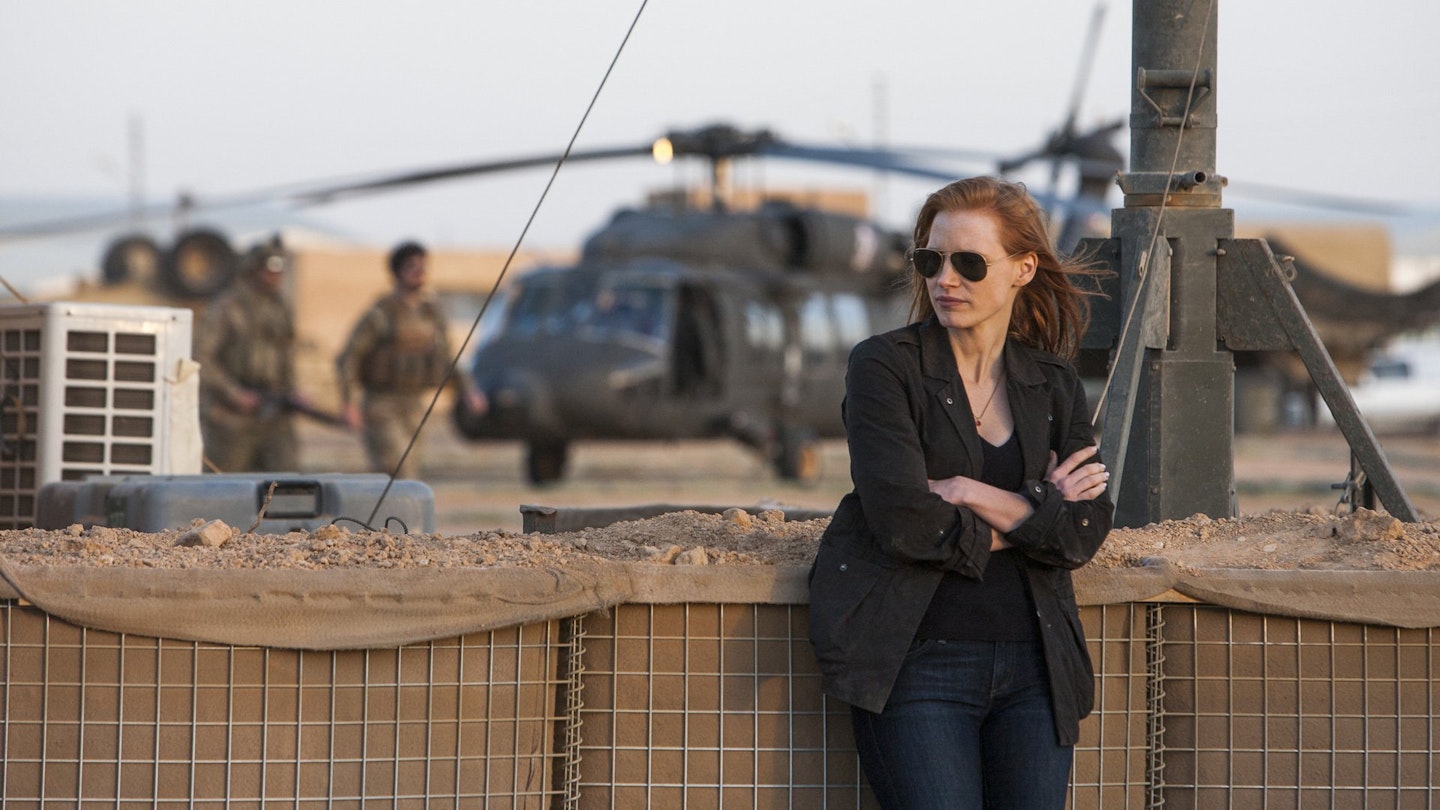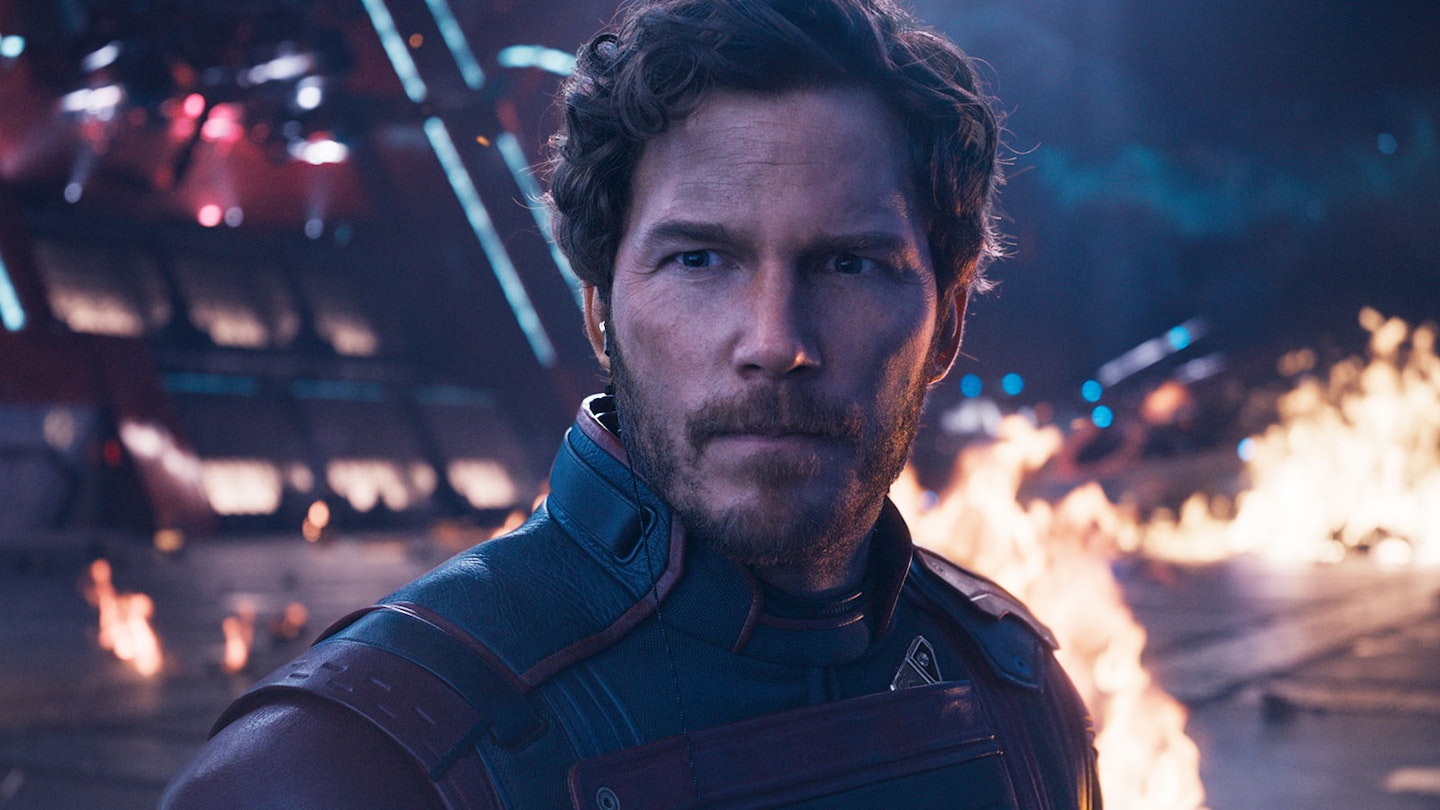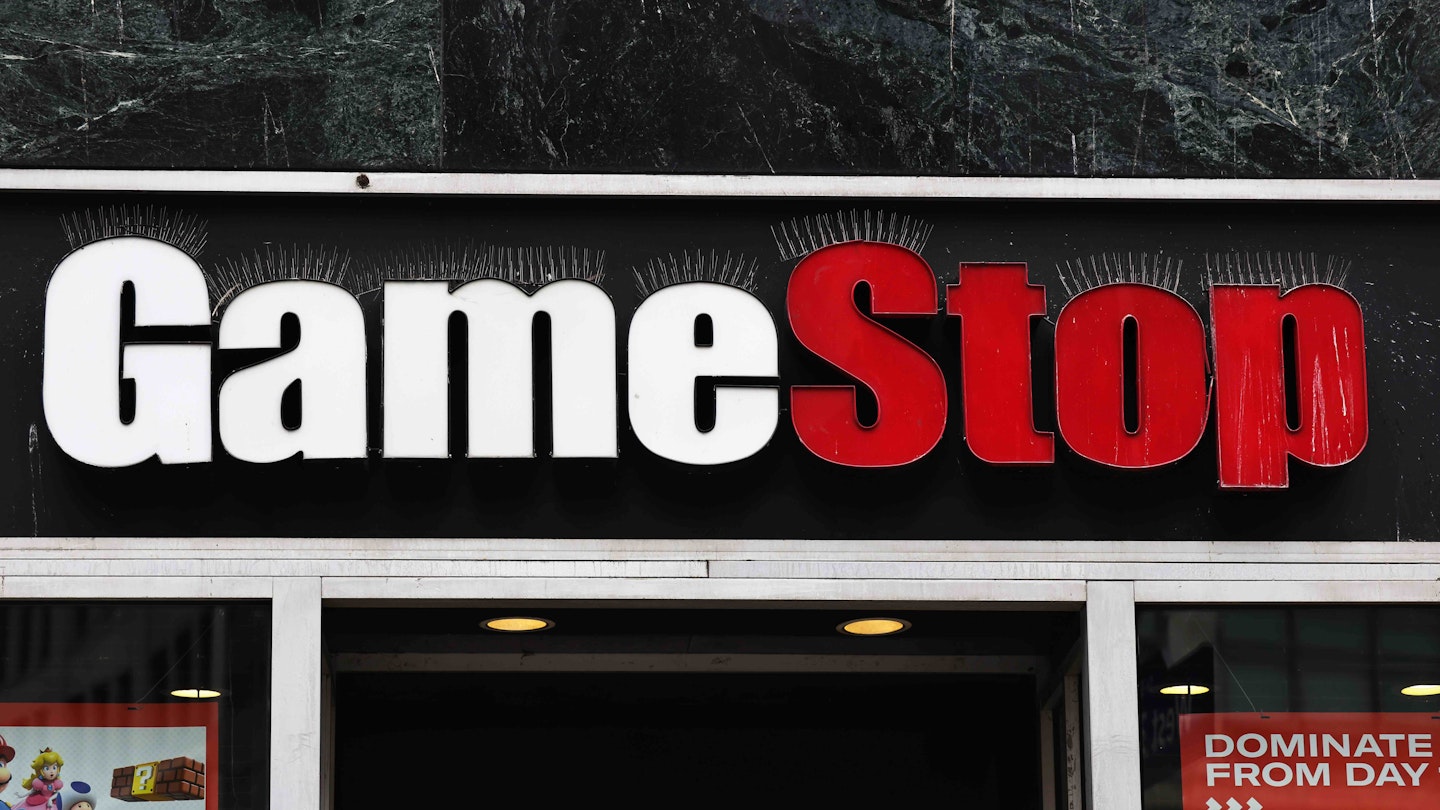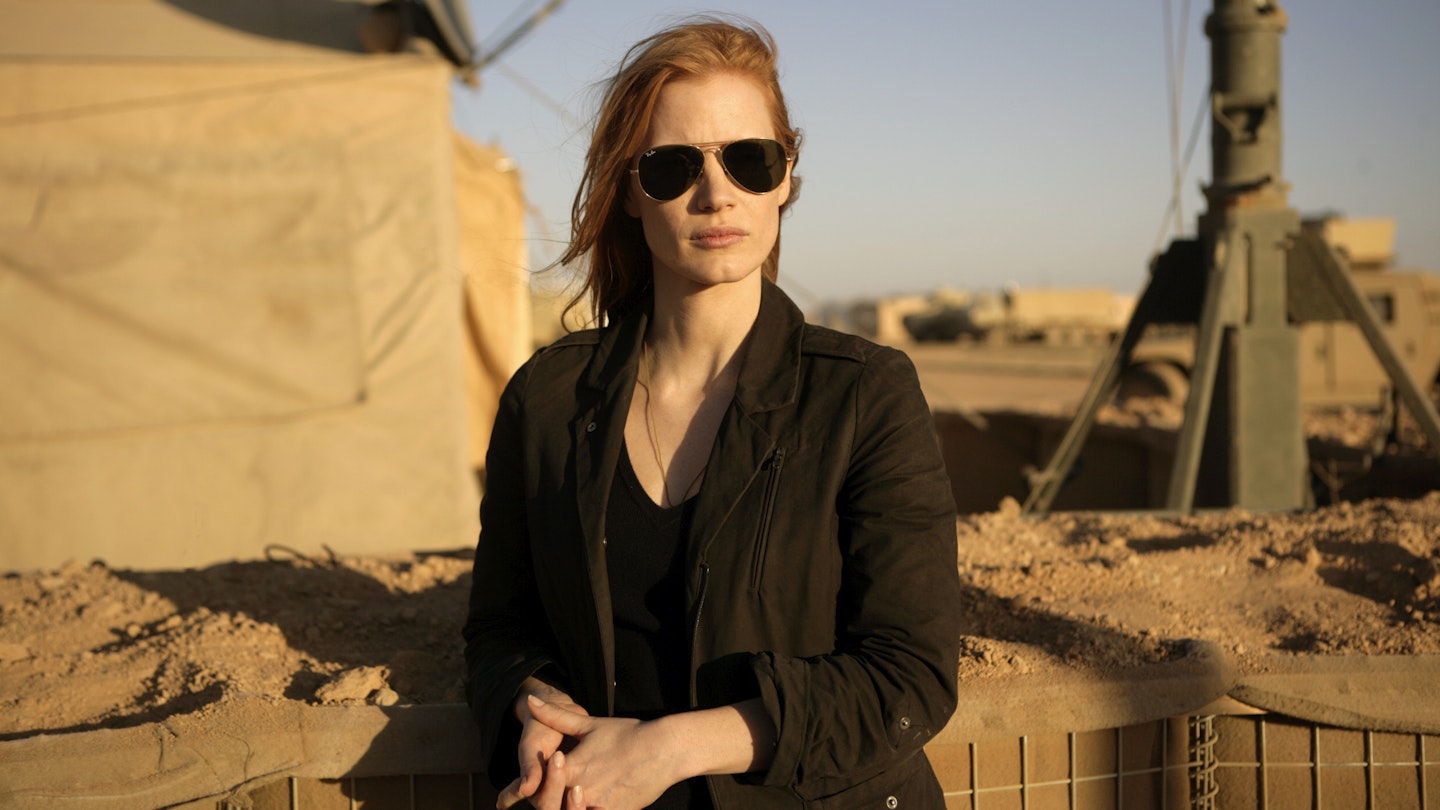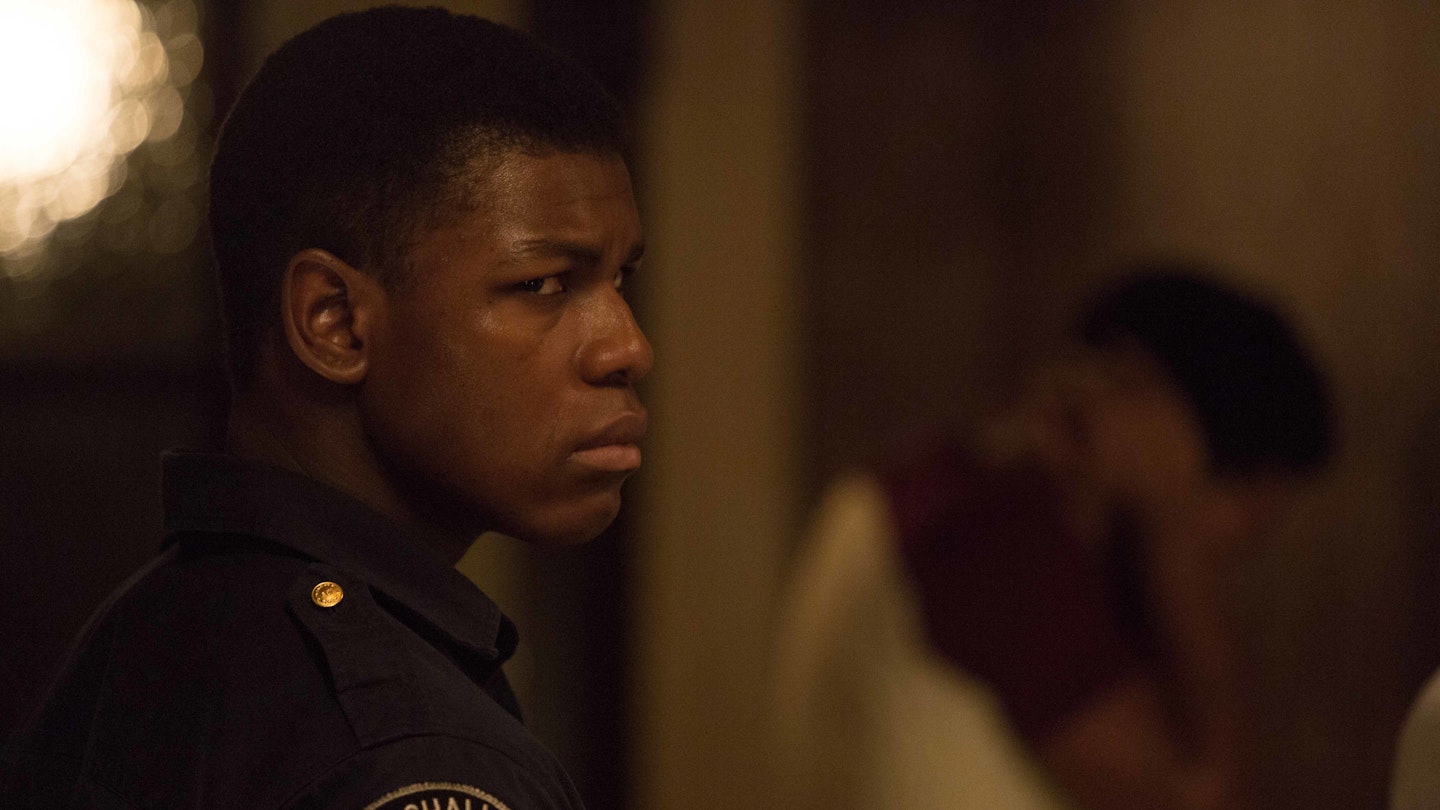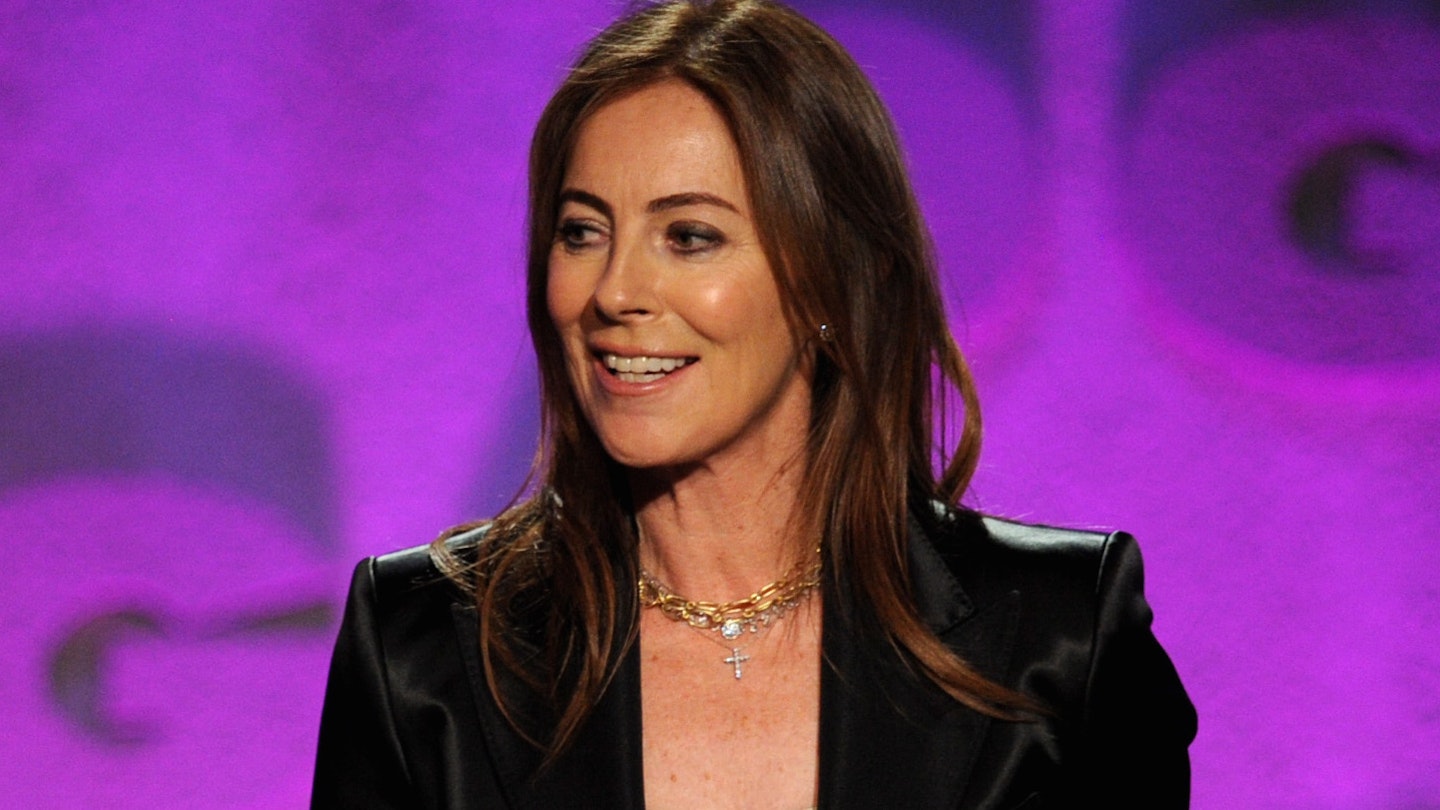The major challenge in telling this particular ripped-from-the-headlines story is underlined by a sequence late in the film. Jessica Chastain’s CIA agent has a face-to-face with a White House aide (James Gandolfini) she needs on side in order to get her inferences about the location of Osama bin Laden acted upon. The aide asks her how long she has worked for the Agency, and learns that practically her entire 12-year career has been devoted to this single target. When he probes deeper, trying to get a handle on why this lonely, debilitating campaign is so important to her, Maya shuts him down. He’s not cleared for any information she might give, even if she were so inclined.
A more conventional movie would have given its lead actress an Oscar clip speech here — about a loved one lost in the struggle, or a commitment to country and cause — but director Kathryn Bigelow and writer-producer Mark Boal remain as tight-lipped as any spook. Chastain’s haunted, intense presence makes a human space in a movie populated by unnamed individuals whose backstories have not been declassified. It’s as pared-down and unjudgmental as any objective documentary, even when Maya’s senior colleague (Jason Clarke) is waterboarding a detainee. Chastain conveys an arc, as Maya goes from flinching in a corner at her first interrogation to dodging bullets when she becomes an assassination target, but moments of character — an analyst (Jennifer Ehle) hoping
to sweeten a deal with a defector by making a cake — have to be snatched between the matter at hand.
Bigelow and Boal, reteaming after The Hurt Locker, initially planned a film about the CIA’s frustrating, fruitless search for bin Laden, until events overtook the project and provided a last-reel payoff. There’s a structural similarity to a Law & Order episode: the long, set-up act focuses on intelligence-gathering, with a whole new set of characters — the strike team despatched in Blue Thunder-lookalike helicopters to assail bin Laden in his lair — brought on and swiftly established for the climax. The film takes care to endorse no party line. When President Obama (seen only in a TV interview, renouncing the use of torture) puts an end to “the detainee programme”, the CIA simply adjust its tactics.
We don’t see any political discussion about what to do with the intel gathered by Maya and her colleagues, but we get a sense of the decade-long tangle of scraps of information gleaned from interrogations and surveillance which makes for a mystery that constantly simmers but threatens never to come to the boil. Few films have conveyed the grinding routine of spying as strongly as this — and the way that big targets have to be located by the ripples they leave even as they stay invisible.
Like Bigelow’s The Hurt Locker, it’s a relatively new kind of American patriotic war movie, counterprogramming jaded paranoid fantasies like the Bourne movies or the liberal horror stories (Redacted, Rendition, In The Valley Of Elah, Green Zone etc.) thrown up by the War On Terror. It’s measured, seething with suppressed emotion, unafraid of slow stretches and false trails, snapping shut like a mantrap when blood is shed. If it grips in a more intellectual, journalistic manner than its Oscar-winning predecessor, it’s because Chastain’s character is necessarily absent during the climax — though she has a terrific post-traumatic outburst when the case is closed.
